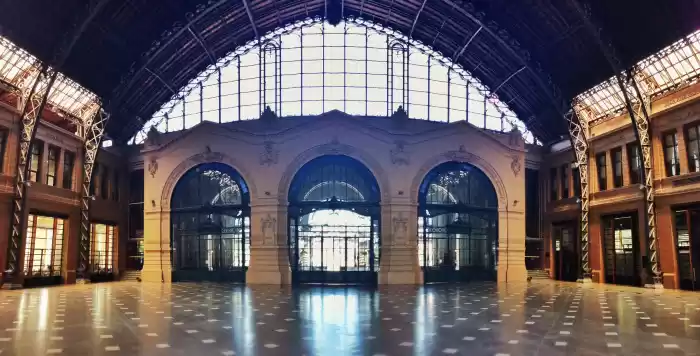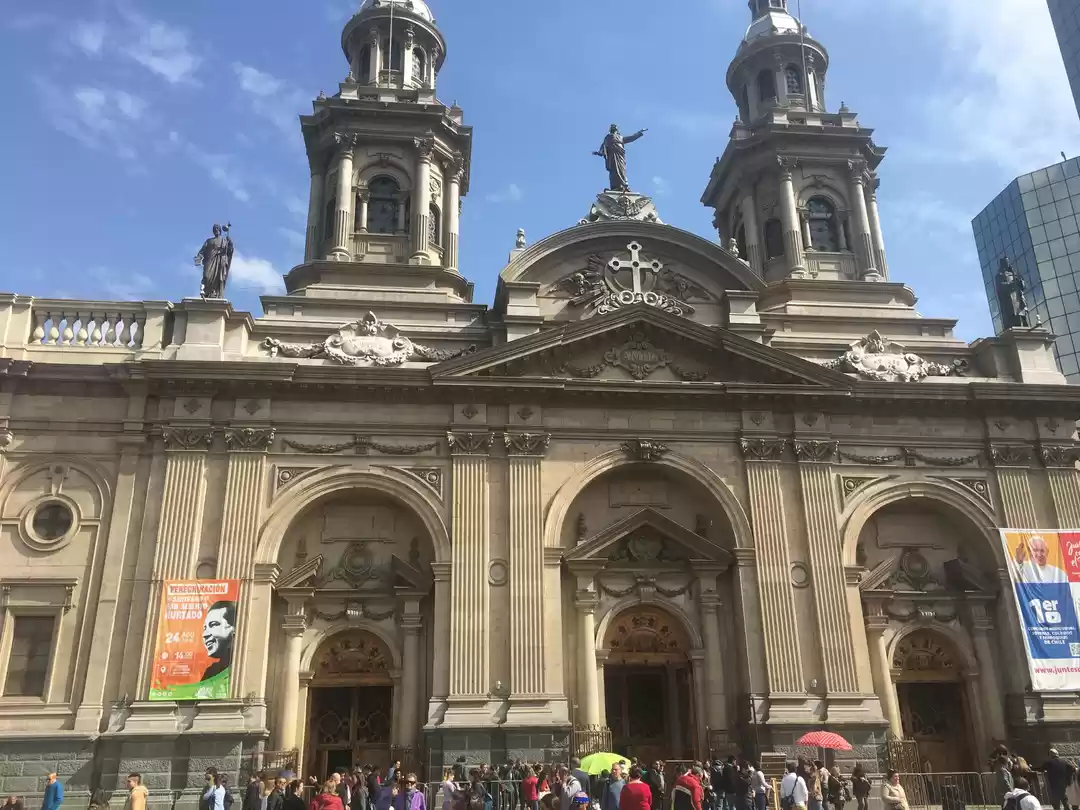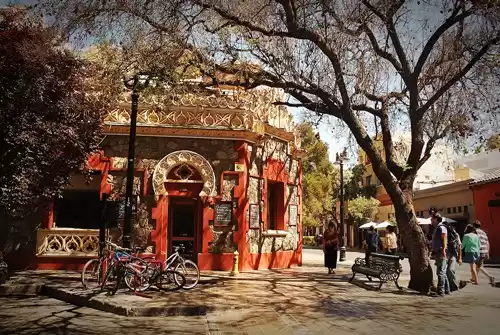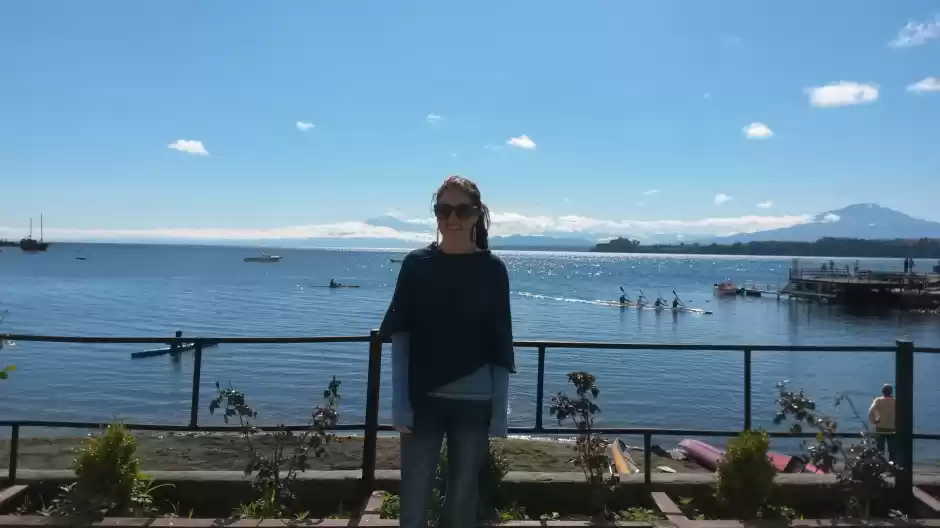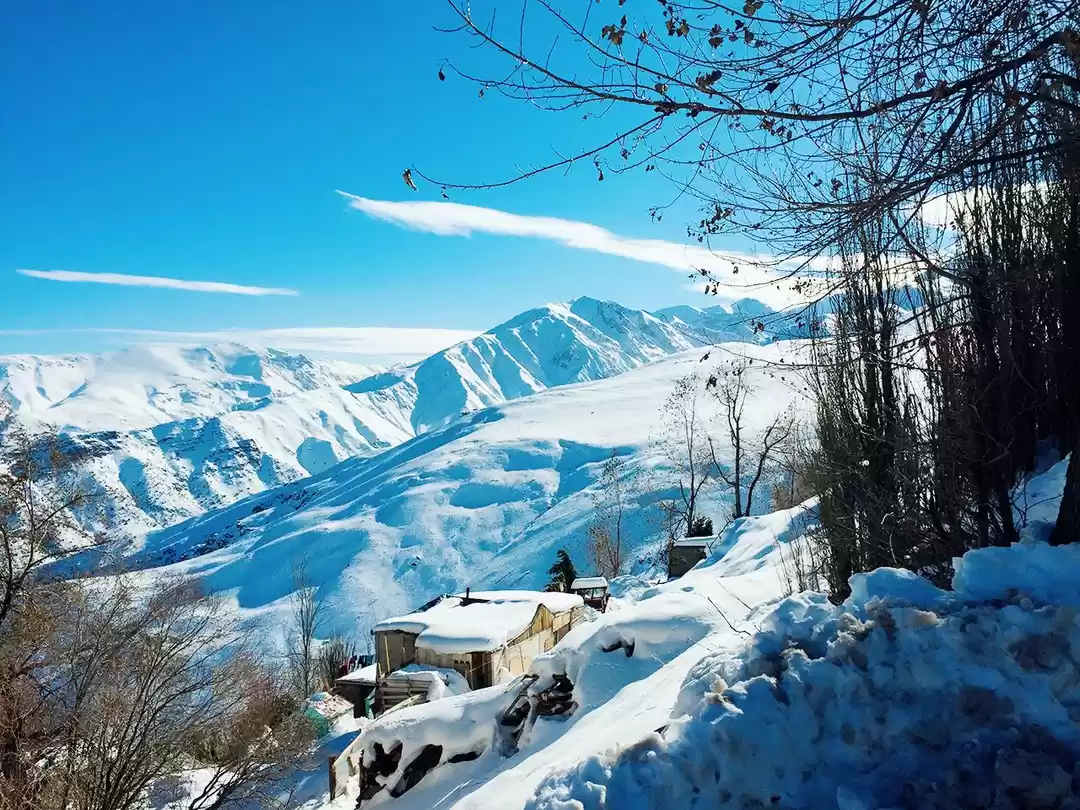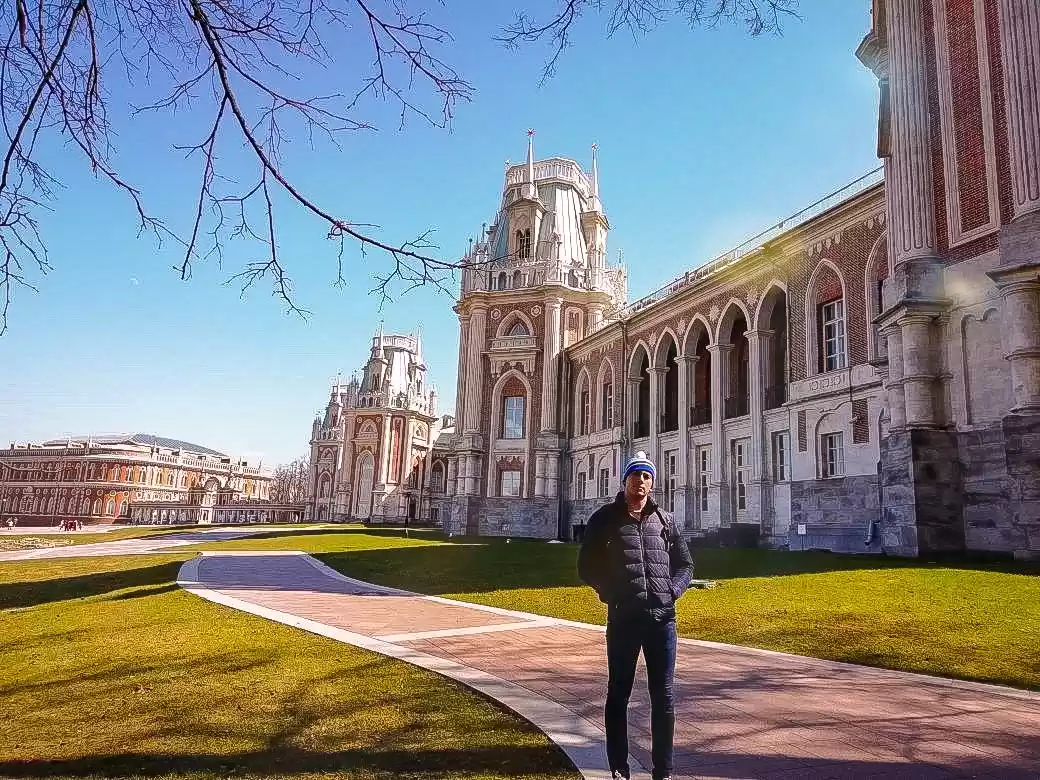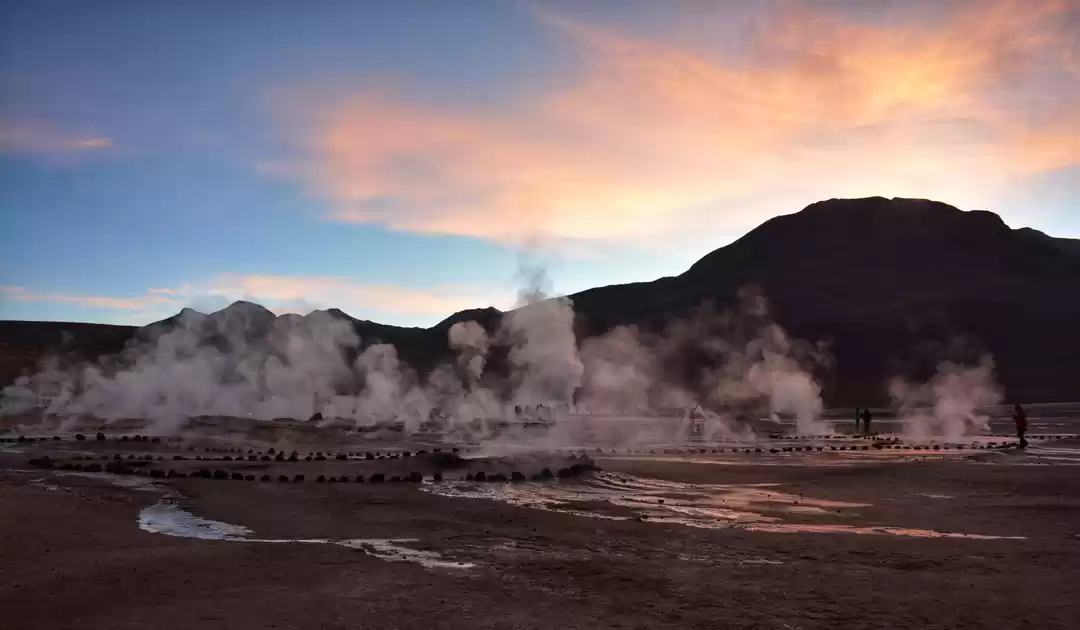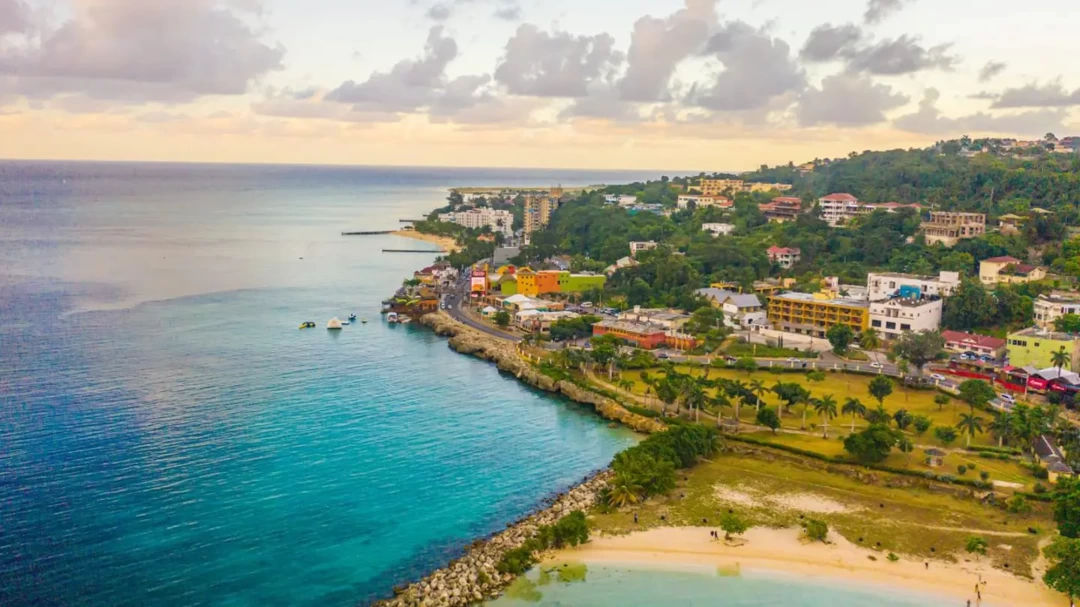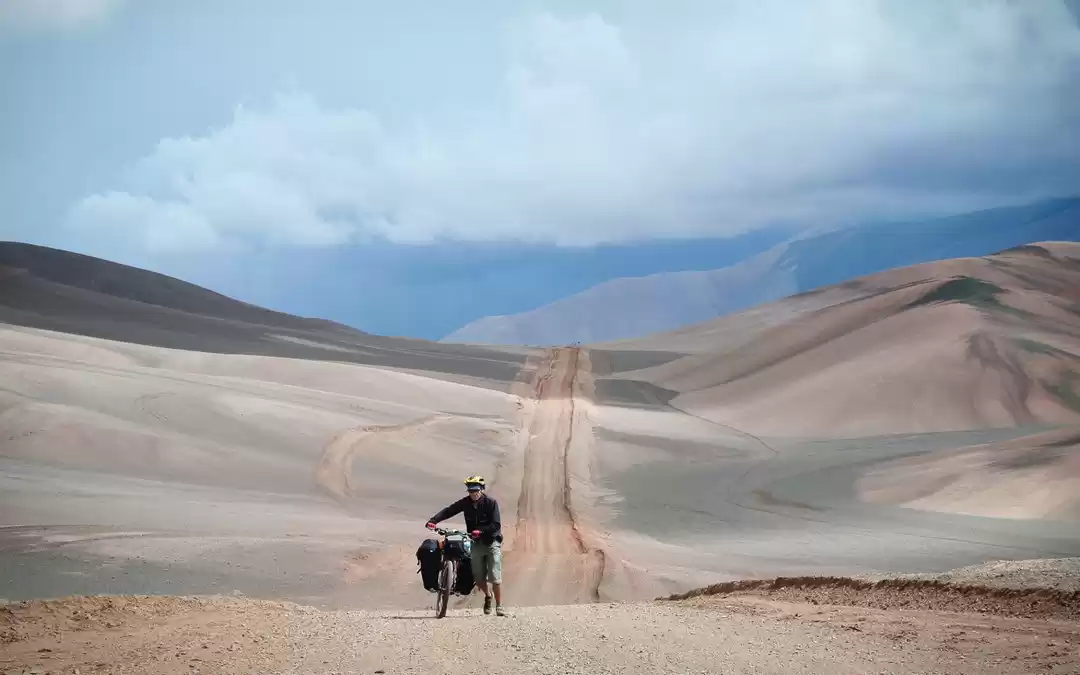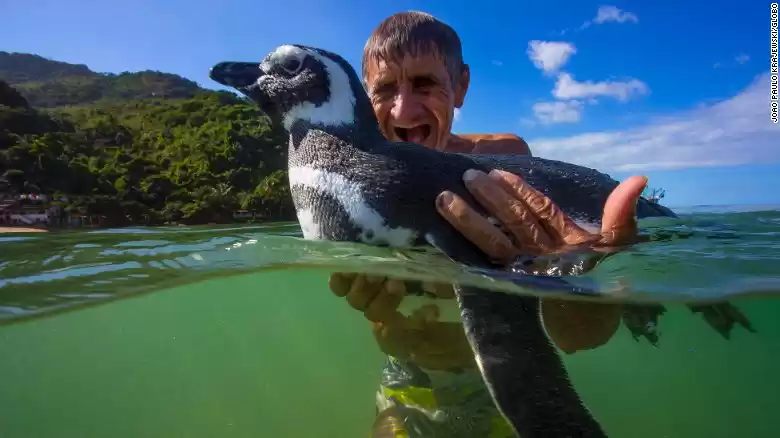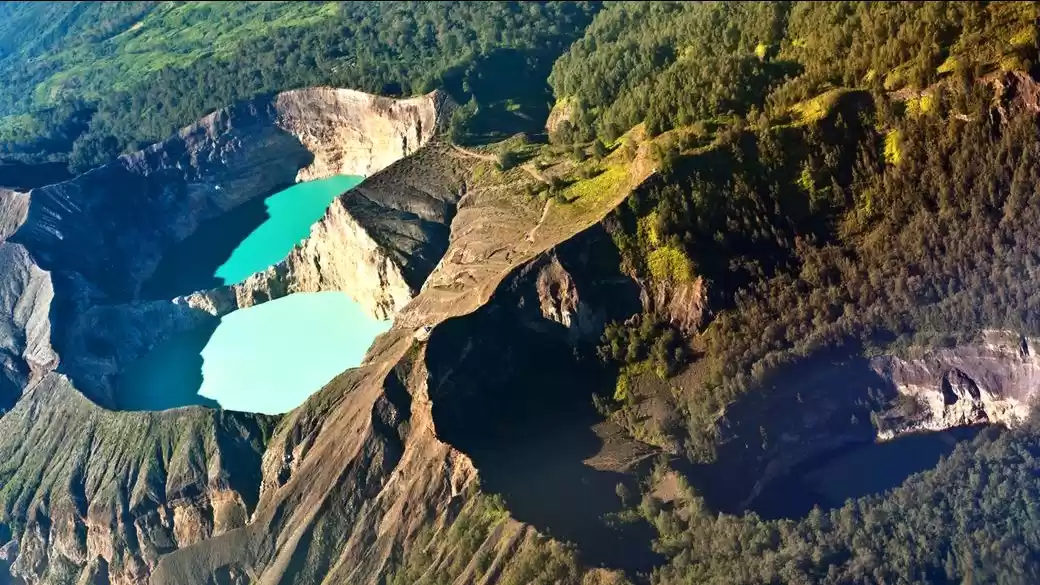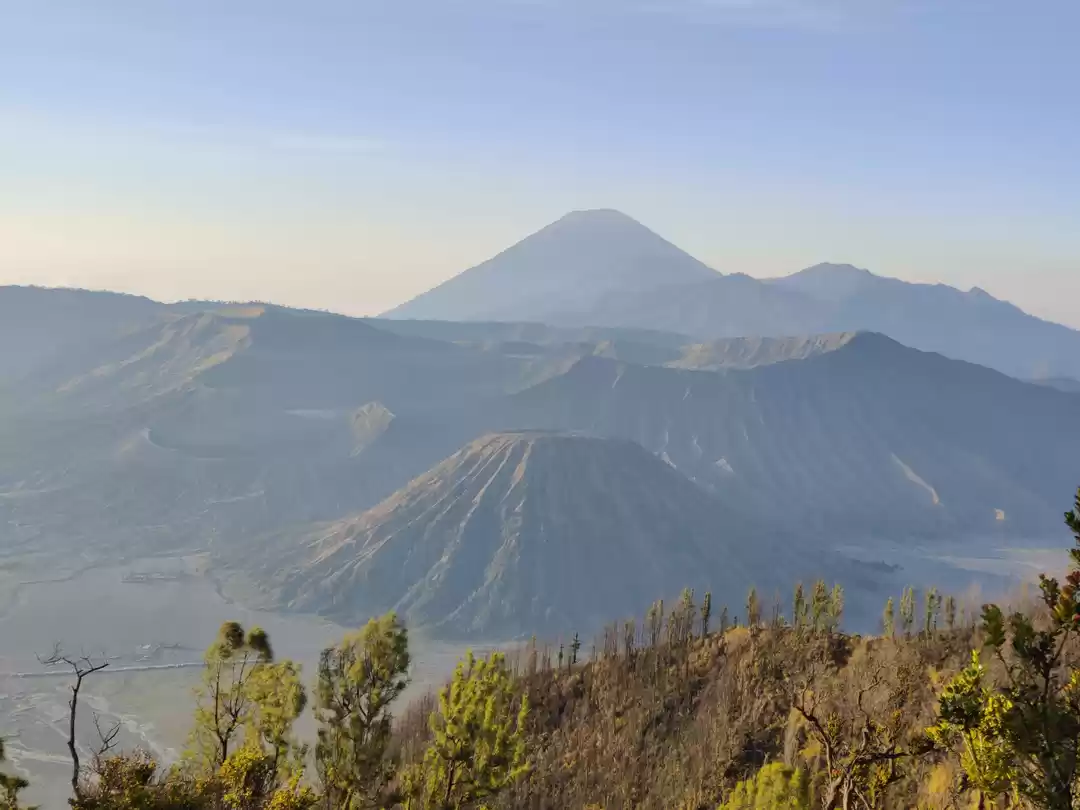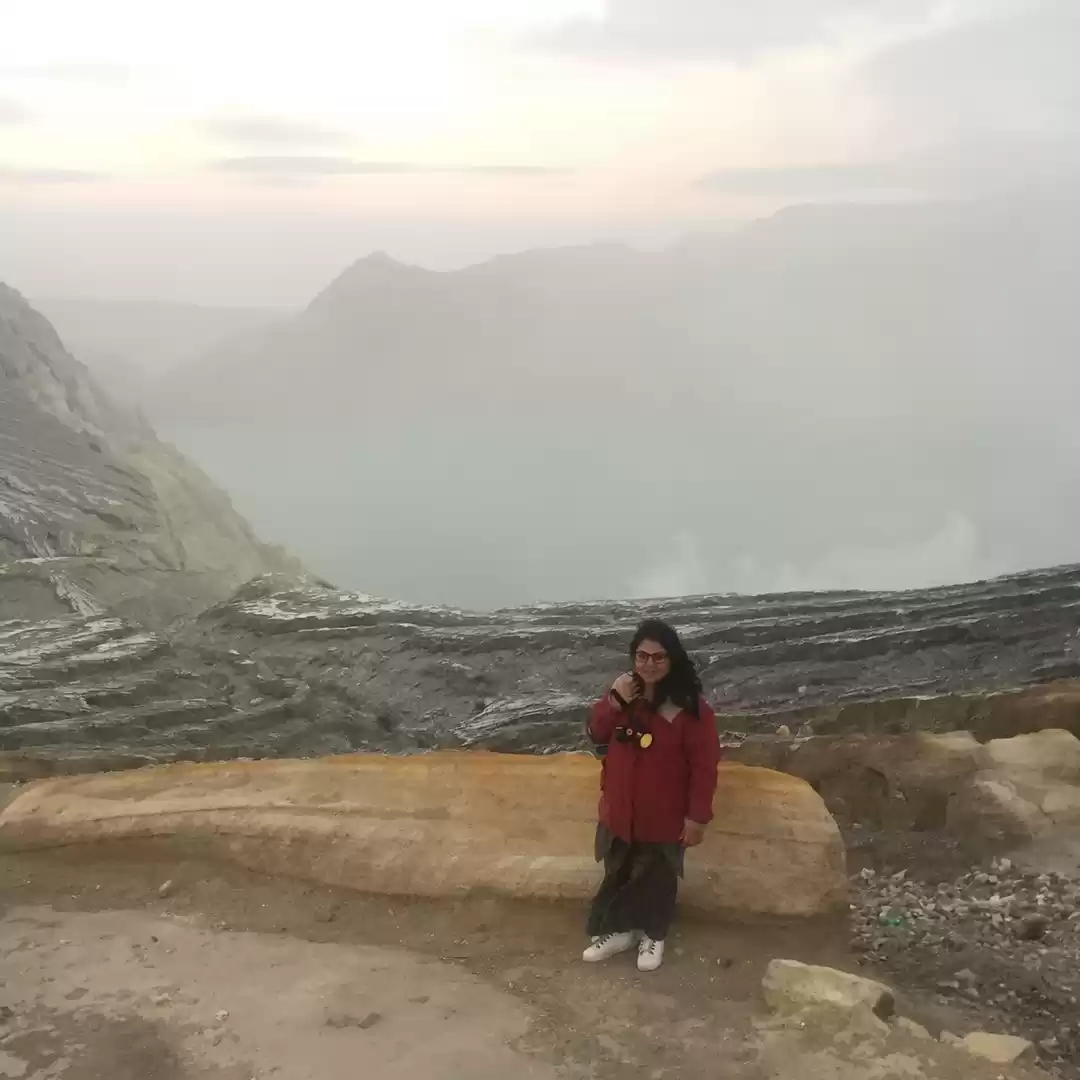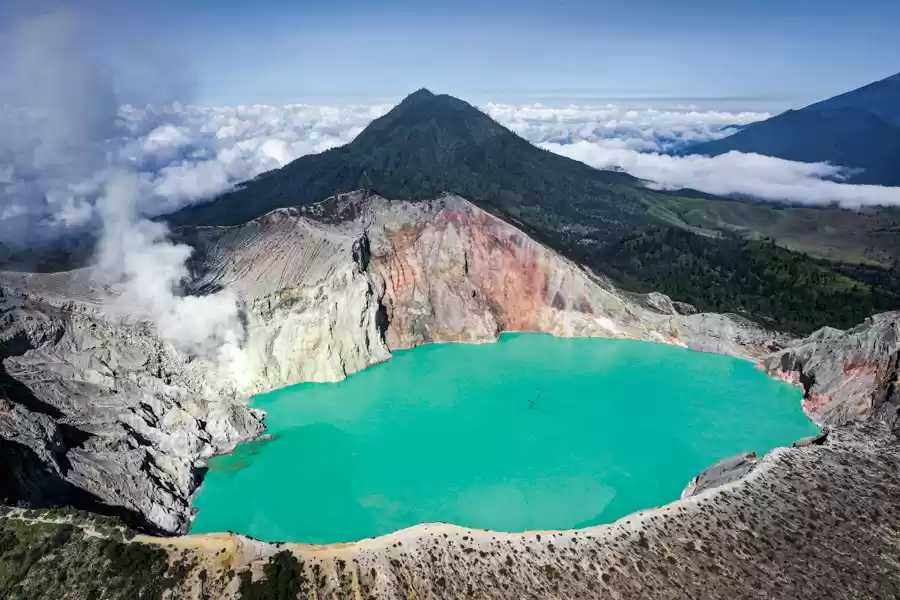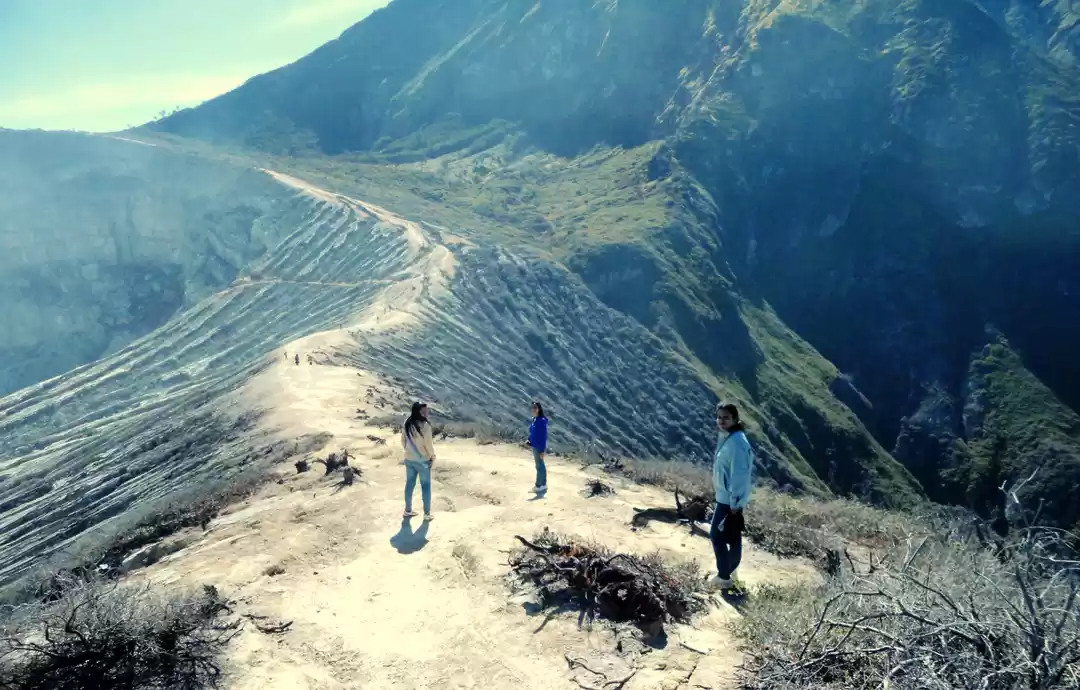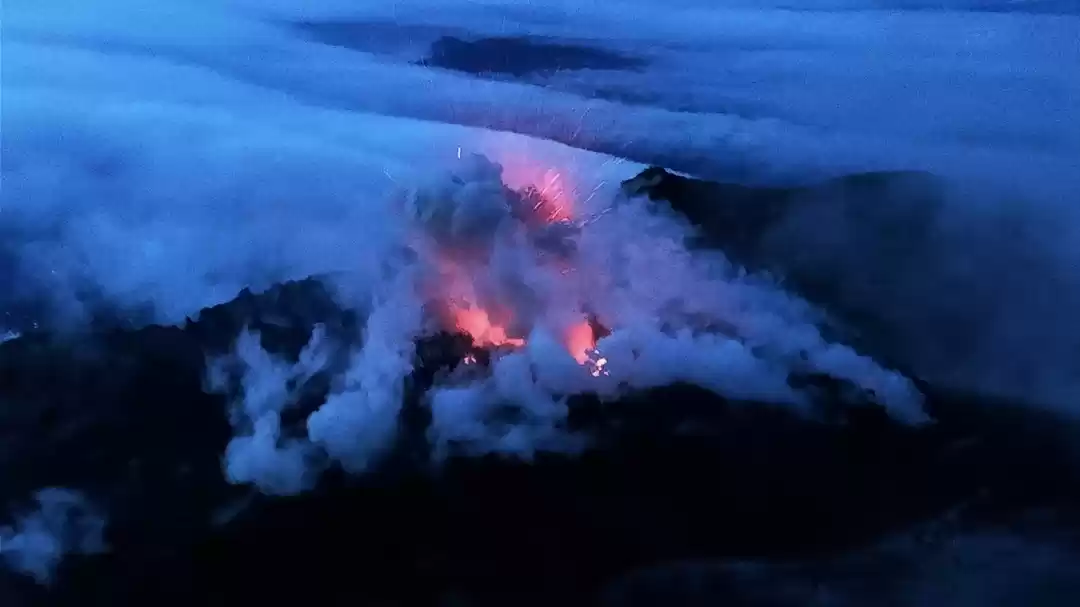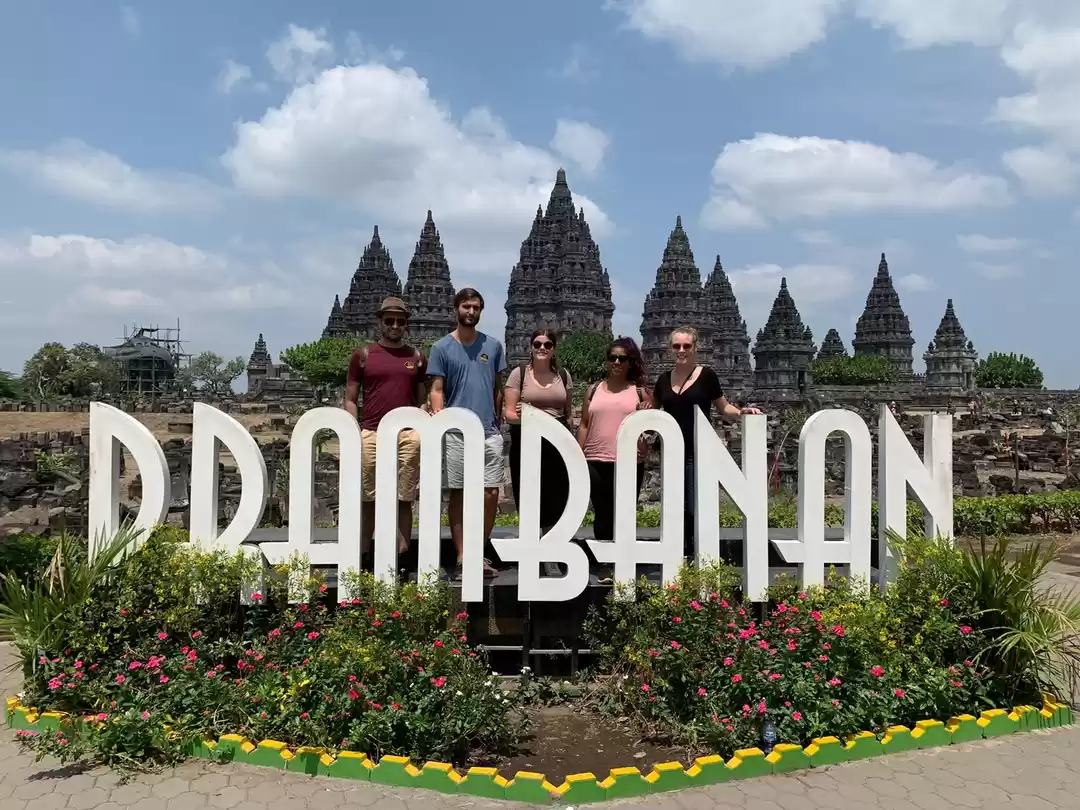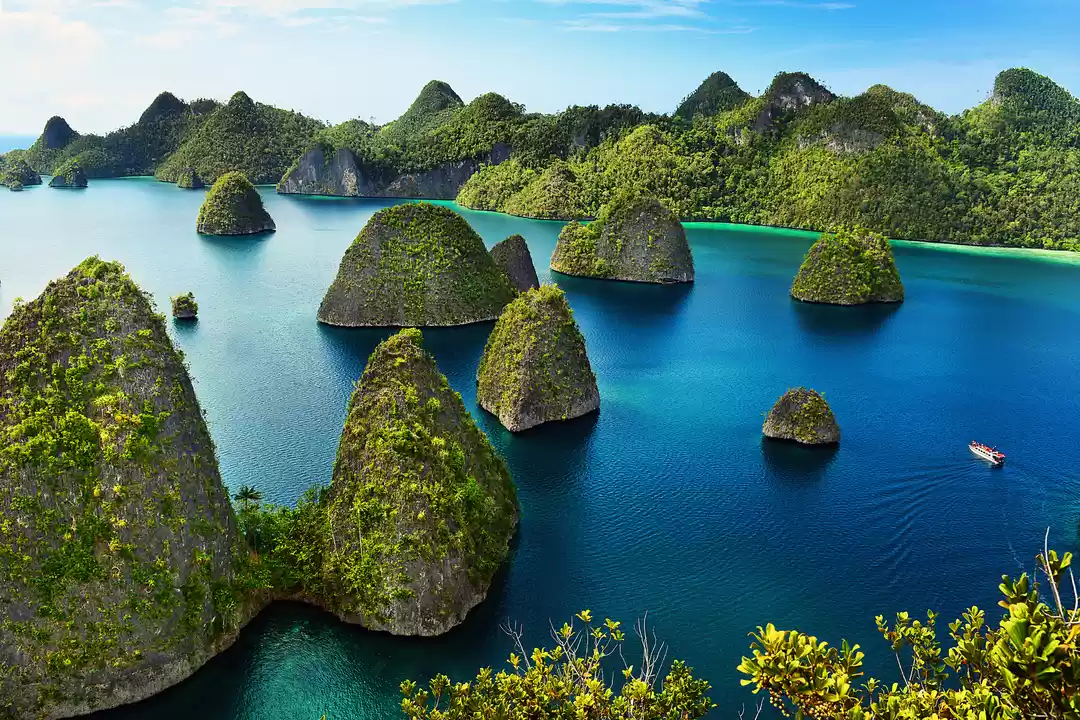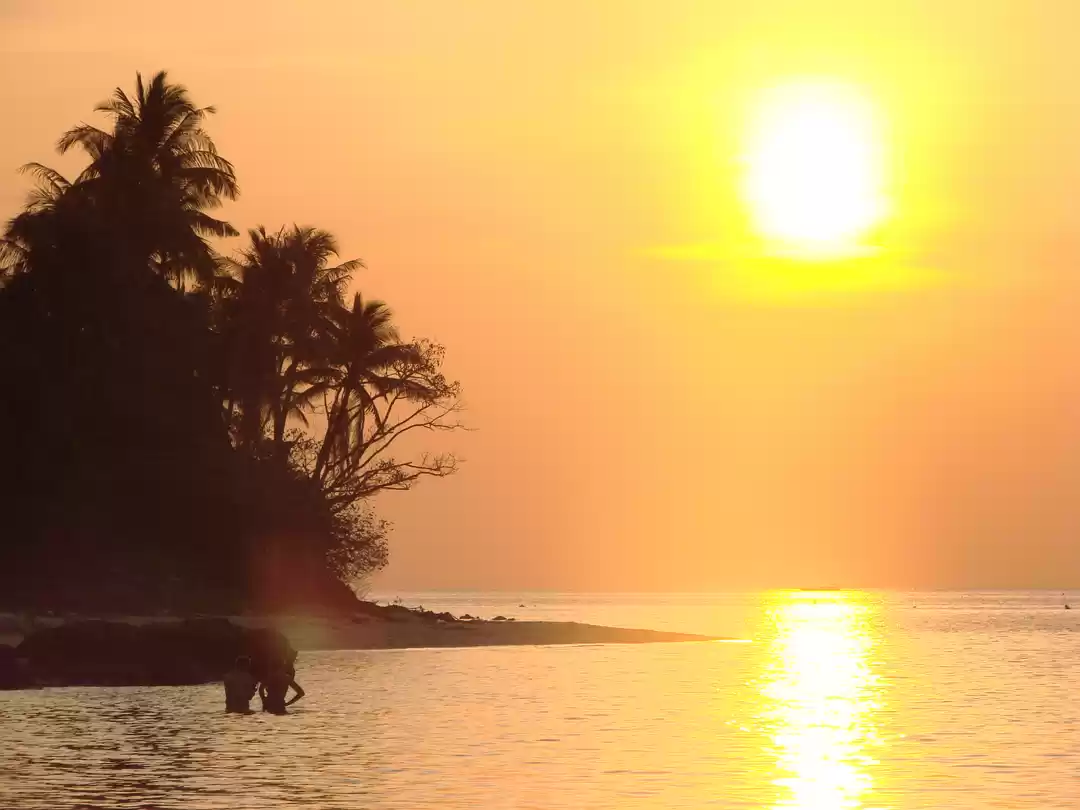Bubbling with acidity and reflecting every possible shade of blue in the sky, the Ijen Crater Lake is a natural marvel carefully protected by the gods. Secluded inside the Ijen Volcano Complex on the island of Java in Indonesia, this crater lake is surrounded by chambers that ooze electric-blue light at night, making the whole scene spellbinding. If seen from above, in the morning, the crater lake mimics a precious turquoise stone. At night, this jewel melts into a shade of midnight purple, surrounded by dazzling blue fireworks!
The Ijen Crater Lake is the largest highly-acidic lake of the world, and a major source of water for the Banyupahit River in Java. The lake continues to be an important mining site where elemental sulphur is obtained by workers from the bottom of the crater. The blue colour rising from the cracks in the crater is due to the various gases that emerge from the chambers at a temperature of over 600 degree Celsius. It's an astounding place, so people who love unique experiences and nature's wonders, should visit it once in their lifetime.

The footfall to this incredible lake increased after National Geographic wrote about the 'blue flame' coming out of the lava cracks. This light was witnessed every night by hikers. Besides this, surreal colours of the crater lake due to its high sulphur and hydrochloric acid content, attracted many hikers who came to visit Java.
Hike to the Ijen Crater Lake:
There are two routes to reach the Ijen Crater Lake. The route from Bali- called 'The Bali Route' will have you crossing into Banyuwangi, in East Java via ferry. The route you can take if you are on Java Island is called 'The Java Route' through Bondowoso in West Java.
To see the crater lake, you will be required to hike 4km to the Caldera Rim, where the lake is located. This hike should be done at night, so you you are able to see the Blue Flame in the dark and the Crater Lake at sunrise.

Some pointers
1. You should ideally reach the Ijen Volcanic Complex at 2am. There is a proper road to reach the complex so you can drive to your destination and park your vehicle in the parking area.
2. The hike till the top of the volcanic complex from the base camp near the parking lot will be about 4 to 5 kilometres. It should take you roughly 2 hours to finish the hike at night because the path you will be walking on will be narrow and slippery. Sulphuric clouds make it difficult to hike up fast on an incline.
3. It will be around 4.30am when you reach the 'Blue Flame'. This can be seen from a platform made especially for hikers to see the flame. However, if you are not comfortable with going too close to the flames, you can easily see them from a little distance. The blue flames will not be visible post 5am, once dawn breaks.
4. You will have to descend a little to reach the Ijen Crater Lake. A special path has been made for hikers where they can walk along the shoreline. The density of sulphuric clouds increase here due to the emissions from the high hydrochloric and sulphur content in the lake. It is not advisable to dip your hands in the water as it it 50-60 degrees hot and acidic.
5. After spending close to an hour at the crater lake, you can hike back to the base camp in broad daylight. You will reach the base camp in 2 hours.
The best time to go for this hike is in August when there is no rain and less number of tourists. Avoid hiking to the lake on weekends to skip the crowd.

Before you go:
– It is advisable that you hire a guide for this hike, as he will be able to explain the various natural phenomenons of this area in detail
– You must carry a head-lamp, a gas mask, and some wipes to keep yourself clean. Due to the huge amount of sulphur fumes in the air, you might face some difficulty in breathing, which is normal. Do not take off your gas mask during the hike.
– Layer your clothes during the trek. Carry one jacket to wear in case you feel a little chilly at night. It becomes searing hot during the day, so you can take off the layers later
– There are no washrooms on the hike. You will have to do it the primitive way by digging a hole
– Jeeps are easily available on both sides of the volcanic complex.
– Plan your trip keeping in mind the last active date of the near by volcanoes' to avoid unnecessary hassle. Mount Merapi, Semeru and Kelud are all active volcanoes near by. If any near by volcano erupts, the ash and cloud cover extend for kilometres around it, affecting regions around it. Sometimes, the ash cover is so much, that flights get suspended.
– You can club this hike with a trip to Bali. Here's an itinerary for that.
The Ijen Crater Lake will make you humble, and respect the hardships in life, once you see the mine workers toiling to earn a living. The simple fact of being in close proximity to something that has the power to destroy you, will be eye-opening. Travel to this lake to discover the many intricate creations of this universe. In return, you would have understood your limitations, horizons, and yourself.
Have you been to the Ijen Crater Lake? Tell us about your experience by writing an article on Tripoto!




